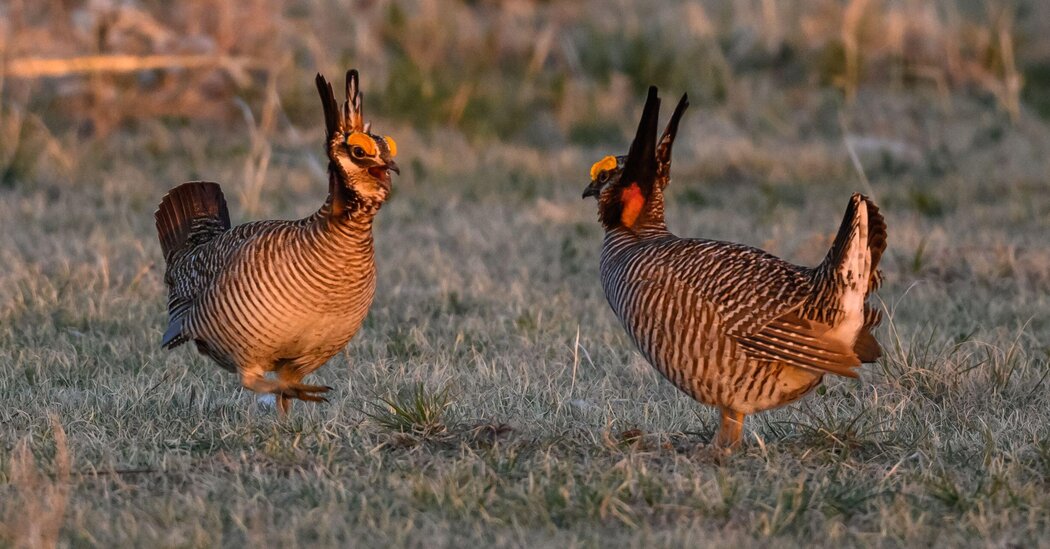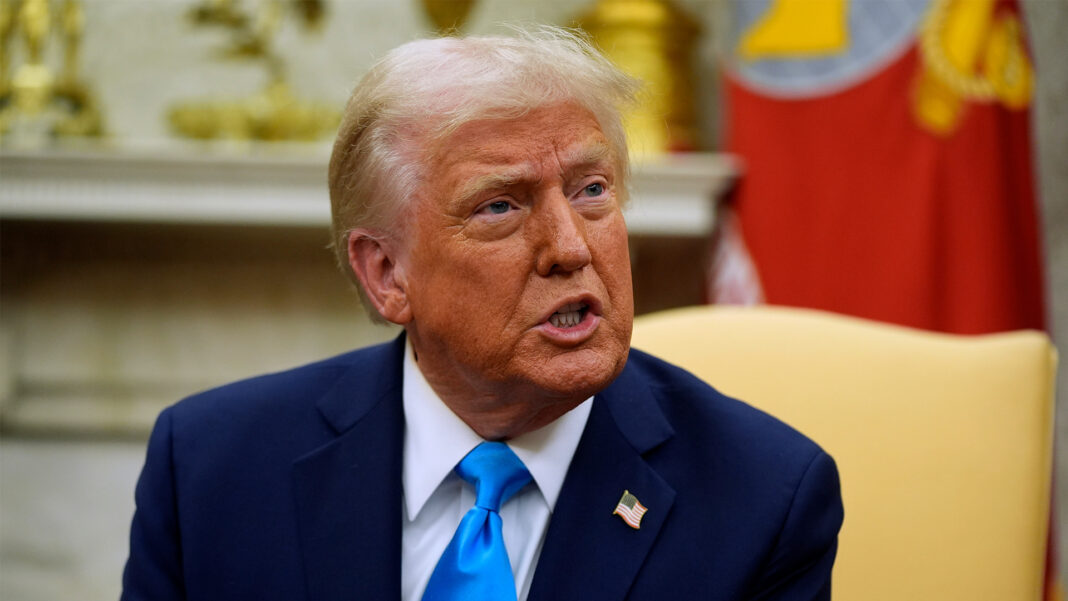The Trump administration has moved to end federal protections for the lesser prairie chicken, a showy grouse with the misfortune of inhabiting southern and central grasslands long sought-after for agriculture and energy development.
In a court filing on Wednesday, officials said the Fish and Wildlife Service had erred in a Biden-era decision that placed the bird on the endangered species list.
It’s the latest in a blur of actions by the White House seeking to weaken or eliminate environmental regulations that constrain President Trump’s “drill, baby, drill” agenda.
And it’s the latest twist for a species whose fate has been fought over for three decades.
Lesser prairie chickens — known for the males’ quirky courtship displays of stamping, fanning their tail feathers and “flutter jumping” — have declined from historic estimates of hundreds of thousands or even millions to only about 30,000 today. Habitat loss is the main culprit.
In the filing, in United States District Court for the Western District of Texas, officials said they expected to re-evaluate the bird’s status by Nov. 30, 2026.
Although the species would lack federal protections under the Endangered Species Act in the interim, the motion stated that “at least sixteen different conservation efforts and programs administered by state, federal, and private entities exist that benefit the lesser prairie chicken.”
But conservationists said the Fish and Wildlife Service would be under no obligation to reconsider the species on that timeline and predicted that they would have to sue to make it happen.
“The Trump administration is again capitulating to the fossil fuel industry, ignoring sound science and common sense, and dooming an imperiled species to extinction,” Jason Rylander, a lawyer with the Center for Biological Diversity, said in a statement.
“Removing Endangered Species Act protections is a purely political act that won’t stand up in court,” he continued. His group has intervened in the case.
As far back as 1998, federal wildlife officials found that the lesser prairie chicken merited protection, but initially said other species were a higher priority. Later, the bird bounced on and then off the list of threatened and endangered species, caught up in lawsuits.
In 2022, under President Biden, lesser prairie chickens were again protected. That decision divided the species into two distinct populations, categorizing the southern one (in eastern New Mexico and Southwest Texas) as endangered and the northern one (in central and western Kansas, central Oklahoma and the northeast panhandle of Texas) as threatened, a less imperiled finding that still affords some protections.
The petroleum and ranching industries sued in 2023, as did the states of Texas, Kansas and Oklahoma.
Now the Trump Administration is arguing that the Fish and Wildlife Service was mistaken in assessing the species as distinct populations, and that doing so “taints the very foundation” of the decision to list it.
The leading global scientific authority on the status of species, the International Union for Conservation of Nature’s Red List, classifies the lesser prairie chicken as vulnerable, akin to the U.S. listing of threatened.
Mr. Rylander with the Center for Biological Diversity said he planned to file an opposition to the federal motion in the coming days. The fight over the lesser prairie chicken is taking place as scientists warn that the planet is facing levels of biodiversity loss that are unprecedented in human history.
Temperate grasslands are among the world’s most imperiled ecosystems.


